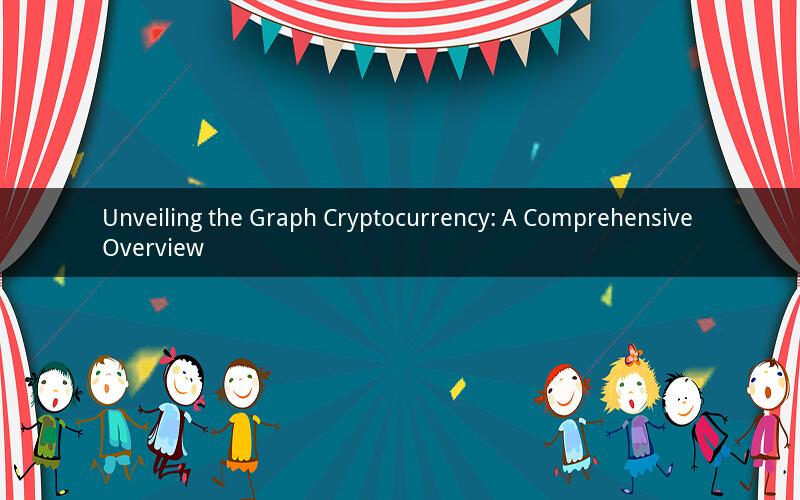
Graph cryptocurrency, often referred to as the Graph Network, is a decentralized network that enables the development of decentralized applications (dApps) on top of Ethereum. It aims to provide a scalable, efficient, and developer-friendly platform for developers to build and deploy their dApps. In this article, we will delve into what graph cryptocurrency is, its key features, and its potential impact on the blockchain industry.
1. What is Graph Cryptocurrency?
Graph cryptocurrency is a blockchain-based platform that allows developers to create and manage decentralized applications (dApps) on top of Ethereum. It is built on the Graph Network, a decentralized network that indexes and provides access to data from Ethereum smart contracts. The main goal of Graph is to solve the scalability issues faced by Ethereum and other blockchain platforms, enabling developers to build dApps that can handle high transaction volumes without compromising on performance.
2. The Graph Network
The Graph Network is a decentralized protocol that enables developers to create indexes of blockchain data. These indexes, known as subgraphs, allow developers to query data from Ethereum smart contracts in a fast and efficient manner. The Graph Network is powered by a network of nodes, which are run by developers who provide their computing power to maintain and improve the network.
3. Key Features of Graph Cryptocurrency
a. Scalability: One of the main goals of Graph cryptocurrency is to provide a scalable platform for dApp development. By using the Graph Network, developers can build dApps that can handle high transaction volumes without affecting performance.
b. Efficiency: The Graph Network enables developers to query data from Ethereum smart contracts in a fast and efficient manner. This allows for quick and easy development of dApps that can provide a seamless user experience.
c. Developer-friendly: Graph cryptocurrency is designed to be developer-friendly, with a focus on ease of use and accessibility. The platform provides a wide range of tools and resources to help developers build and deploy their dApps.
d. Decentralization: The Graph Network is a decentralized platform, meaning that it is not controlled by any single entity. This ensures that the platform remains open, transparent, and resistant to censorship.
4. The Graph Token (GRT)
The Graph Token (GRT) is the native cryptocurrency of the Graph Network. It is used to incentivize the developers who run nodes on the network and to pay for the computation resources required to index and query data. GRT is also used to vote on the governance of the Graph Network, allowing token holders to have a say in the direction of the platform.
5. Potential Impact on the Blockchain Industry
Graph cryptocurrency has the potential to significantly impact the blockchain industry in several ways:
a. Scalability: By providing a scalable platform for dApp development, Graph cryptocurrency can help alleviate the scalability issues faced by Ethereum and other blockchain platforms.
b. Efficiency: The Graph Network's efficient indexing and querying capabilities can lead to faster and easier development of dApps, which can improve the overall user experience.
c. Developer-friendly: The Graph Network's developer-friendly approach can attract more developers to the blockchain industry, leading to an increase in the number of dApps and the overall growth of the industry.
d. Decentralization: The decentralized nature of the Graph Network ensures that the platform remains open, transparent, and resistant to censorship, which can help foster innovation and growth in the blockchain industry.
Frequently Asked Questions (FAQs)
1. Q: What is the main advantage of using Graph cryptocurrency over other blockchain platforms?
A: The main advantage of using Graph cryptocurrency is its focus on scalability, efficiency, and developer-friendliness. The Graph Network provides a scalable platform for dApp development, with efficient indexing and querying capabilities that enable faster and easier development of dApps.
2. Q: How does the Graph Network work?
A: The Graph Network is a decentralized protocol that enables developers to create indexes of blockchain data. These indexes, known as subgraphs, allow developers to query data from Ethereum smart contracts in a fast and efficient manner. The network is powered by a network of nodes, which are run by developers who provide their computing power to maintain and improve the network.
3. Q: What is the role of the Graph Token (GRT) in the Graph Network?
A: The Graph Token (GRT) is the native cryptocurrency of the Graph Network. It is used to incentivize the developers who run nodes on the network and to pay for the computation resources required to index and query data. GRT is also used to vote on the governance of the Graph Network.
4. Q: Can Graph cryptocurrency help alleviate the scalability issues faced by Ethereum?
A: Yes, Graph cryptocurrency can help alleviate the scalability issues faced by Ethereum. By providing a scalable platform for dApp development, Graph can enable Ethereum to handle high transaction volumes without affecting performance.
5. Q: How can Graph cryptocurrency impact the blockchain industry?
A: Graph cryptocurrency can significantly impact the blockchain industry by providing a scalable, efficient, and developer-friendly platform for dApp development. This can lead to an increase in the number of dApps and the overall growth of the industry, fostering innovation and growth in the blockchain sector.